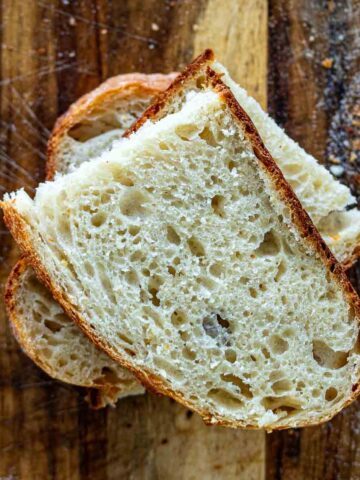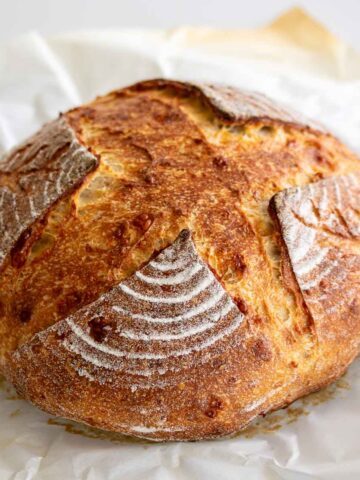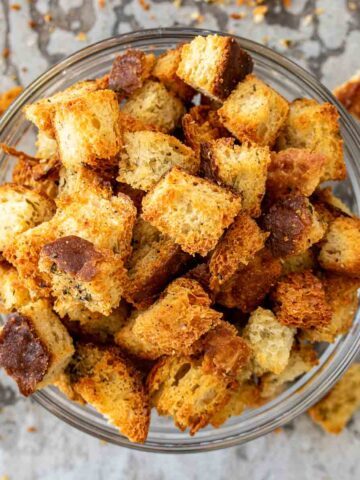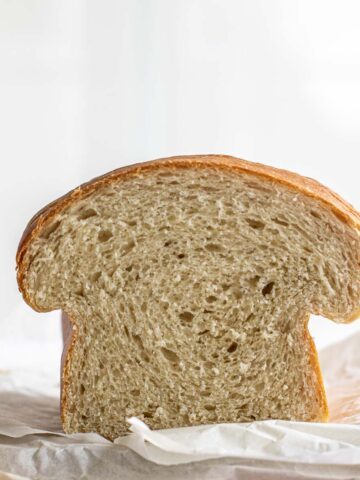Sourdough Starter Troubleshooting is part of Sourdough Starter 101 course.
What can kill my starter?
Temperatures above 85°F (30°C) and neglecting it for too long, as it can develop mold/bad bacteria.
What’s that brown liquid on my starter?
The liquid is called hooch and is another sign your starter is underfed. Don’t worry, although it may have a stinky smell, your starter is not dead.
You can discard this liquid next time you feed your starter, or simply stir it all together before discarding.
On the first days of my culture I would simply stir it all together, as it’s pretty common to appear at least in one day.
If your culture has been underfed for more than one day, I would discard this liquid and then feed the starter.
If this is happening even with you feeding once a day, increase the feeding twice a day for some time, or use a higher amount of flour.
Shouldn’t I leave the jar open?
You definitely don’t need to leave it open to ‘catch’ anything: everything you need is already on the flour.
That’s why it’s easier to start a culture with an organic and chemically untreated flour, as it has a lot more to offer. You shouldn’t shut it totally, but you have to cover it.
Can I convert my AP flour starter to a rye/bread flour/whole wheat flour starter?
Yes, you can. Just feed it with the desired flour for a couple of days.
Of what I’ve seen, your starter may not like the change and the activity may slow down a bit.
To keep it happy, I would do the following when changing the feeding flour: if you use all-purpose flour and want to change for whole wheat flour, use a mixture of both for a couple of days when feeding.
Why does my starter have a pink/orange tinge/streak?
If you forget to feed your starter for too long, it may develop pink/orange tinges or streaks. These are signs of bad bacteria.
Once you see it, throw your culture away and restart.
What if I spot mold on my starter?
Mold, when present, usually stays on the surface of your starter, and it can be pink, a dark green, and some shades of blue.
It’s super hard for mold to grow on your starter, and I’ve never heard or seen it myself. It can happen, though.
If it happens to you and you’re too attached to your culture, you can try saving it by removing a tablespoon of mold-free starter and feeding it until healthy again.
If the mold grows back, I would throw it out for good, though.
How can you prevent mold?
- Don’t store your starter in a place that’s too warm;
- Don’t leave in contact with direct sunlight (as it may be too hot for it and more likely for mold to grow);
- Try to place your starter away from fruits;
- Don’t leave the jar uncovered;
- If you live in a warm city/country, leave it inside a cabin, protected from direct sunlight.
Also, try not to underfeed your starter. If you forget too frequently to feed your culture, it may be more prone to mold development.
Next: Bake a basic sourdough bread
Or go back to Sourdough Starter 101
FOLLOW ME on INSTAGRAM, PINTEREST, FACEBOOK, and YOUTUBE for more sourdough recipes that work!





Leave a Reply